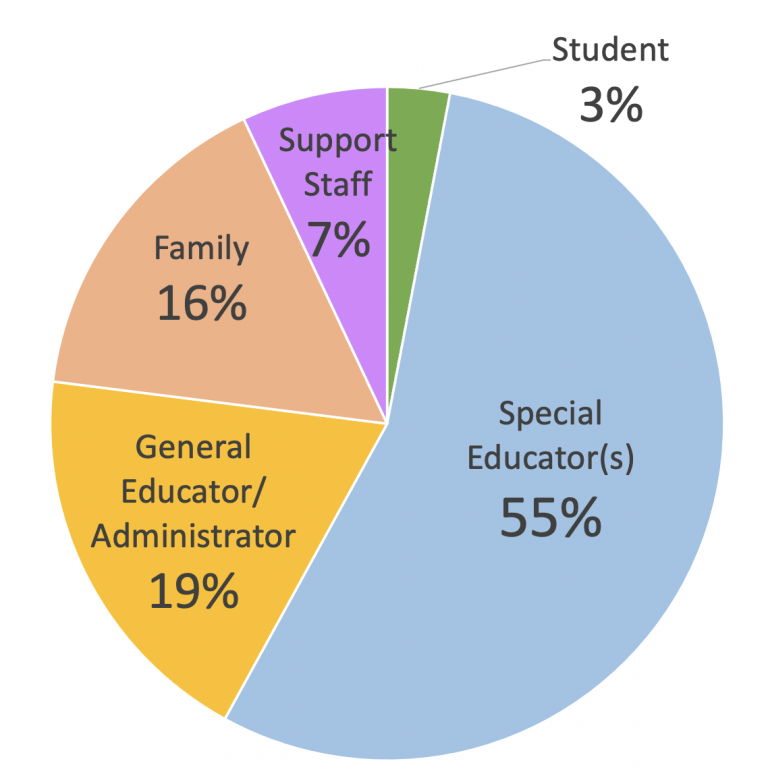Student-Led IEP Meetings: Empowering Students to Take Charge of Their Education

Student-Led IEP Meetings: Empowering Students to Take Charge of Their Education
Imagine a student sitting quietly (and nervously) at the end of a long conference table, surrounded by adults discussing his future. The conversation contains words he’s never heard before, and the adults are talking about him—not to him. He feels more like an observer than a participant in his own educational journey.
This scene is all too common.
But what if we could transform this passive experience into one of empowerment and engagement?
That’s where student-led Individualized Education Program (IEP) meetings step in and help educators shift the focus from adults making decisions for students to students actively participating in their own educational paths.
Why Implement Student-Led IEPs?
Student-led IEP meetings empower students by involving them directly in their educational planning process. When students are given a voice in their own meetings, they:
-
Develop critical life skills such as communication, self-advocacy, and collaboration.
-
Gain confidence in expressing their needs and preferences.
-
Foster stronger relationships with teachers, administrators, and family members.
-
Engage more deeply with their learning and future goals.
Another reason students need to be more involved can be seen by the graph below.
Students only speak for about 3% of the average IEP meeting (if at all!), even though the meeting is all about them. That needs to change.

The Four Steps to Student-Led IEP Success
Student involvement doesn’t have to start with running the whole meeting. In fact, the most effective approach is gradual, moving through four progressive stages:
Step 1: Gather Student Input (Before the Meeting)
Preparation starts here. Every student—regardless of age, grade level, or cognitive ability—can contribute their perspective.
Ways to gather input:
-
Conversations: Ask open-ended questions like, “What’s going well?” or “What could we change to make school easier for you?”
-
Surveys: For students who prefer writing or need structured prompts.
-
Visual Tools: Younger students may enjoy using IEP Input Forms for Younger Students with Emoji Cards, while older students can use an IEP Input Survey for Students for deeper reflection.
Pro Tip: Build input gathering into regular check-ins throughout the school year—not just right before the IEP meeting. Google forms work really well!
Step 2: Encourage Attendance (Some or All of the Meeting)
Even just being in the room can help students feel connected to the process.
Start small:
-
Invite students transitioning to a new building or school level to attend part of their meeting.
-
Have them introduce themselves and share one strength or goal.
-
Role-play beforehand to reduce anxiety.
For younger students, attendance might mean a short appearance to share something positive. For older students, it could involve staying through discussions about accommodations or goals.
Step 3: Support Active Participation (During the Meeting)
When students are ready, encourage them to take a more active role:
-
Present their strengths, challenges, and goals using a slide deck or simple notes.
-
Answer questions from the team.
-
Ask for clarification when needed.
-
Share which accommodations are most helpful.
Educators and parents remain in a supportive role...facilitating, but not dominating, the conversation.

Step 4: Guide Students Toward Leadership (Ultimate Goal)
The ultimate aim is for students to lead their own IEP meetings—fully or in part.
Leadership could look like:
-
Running through the agenda
-
Leading the discussion about accommodations
-
Presenting progress toward goals
Not every student will reach this point immediately, and that’s okay. Focus on progress over perfection, celebrating each step toward greater independence.
After the Meeting: Reflection & Goal Setting
Post-meeting reflection is essential. This is when students and educators:
-
Discuss what went well.
-
Identify areas for improvement.
-
Set actionable goals to carry forward.
Encouraging students to keep a reflective journal can help track their growth and prepare them for future meetings.
Adapting for Different Ages
Participation levels will naturally vary:
-
Younger students may share a personal reflection or one thing they enjoy about school.
-
Middle school students can discuss learning challenges and preferred supports.
-
High school students often lead large portions—or the entirety—of the meeting.
Tailoring the process to developmental readiness ensures all students benefit from the empowerment of being involved.
Want to Try Student-Led IEPs This Year??
Student-led IEP meetings don’t just change the meeting itself—they change the way students see themselves in their own education.
By moving from input → attendance → participation → leadership, and following up with reflection, we help students build confidence, self-advocacy, and a strong sense of ownership over their learning.
And if you’re ready to get started, check out these helpful tools:
Have you experienced the benefits of student-led IEPs? Share your insights in the comments!




